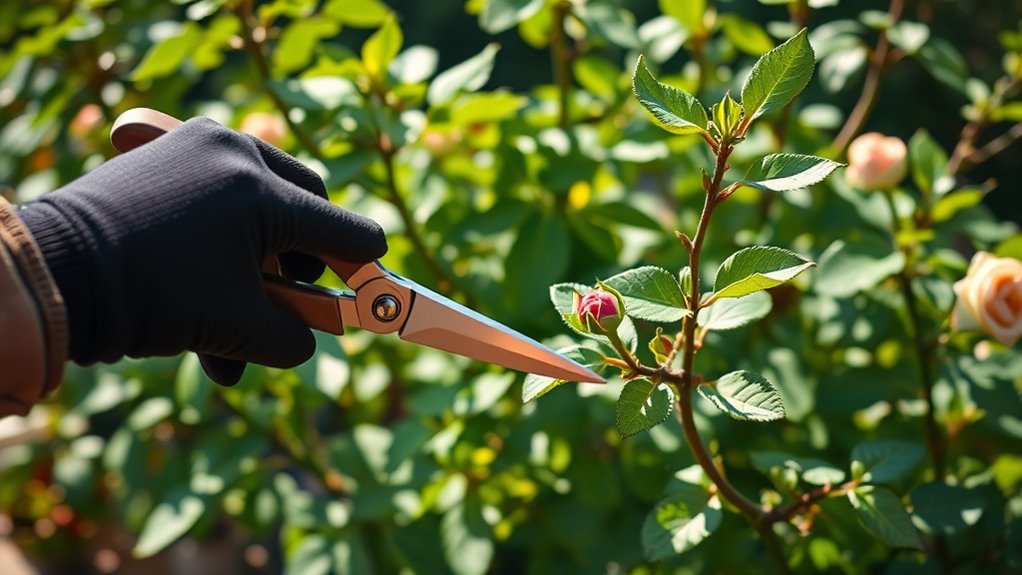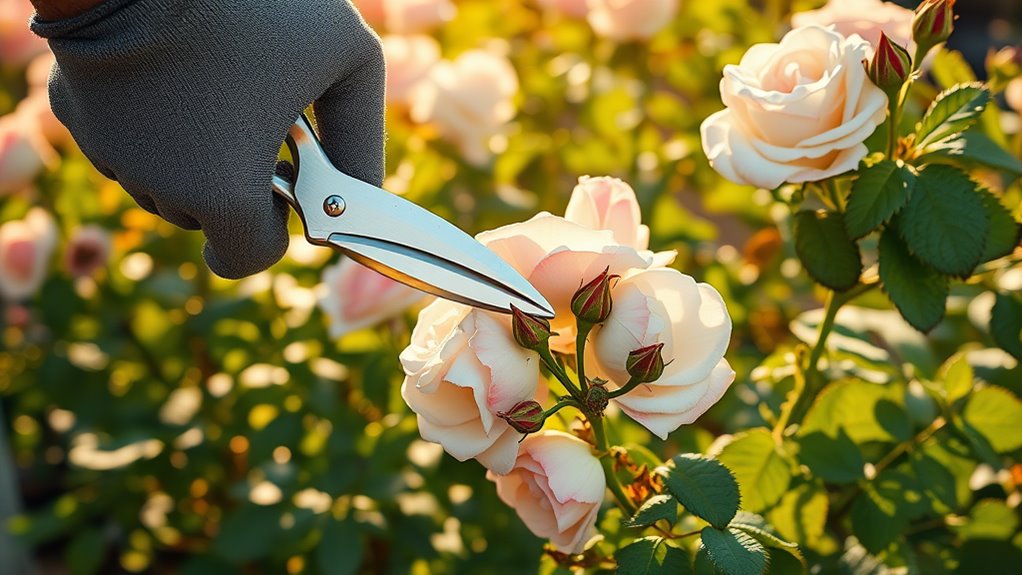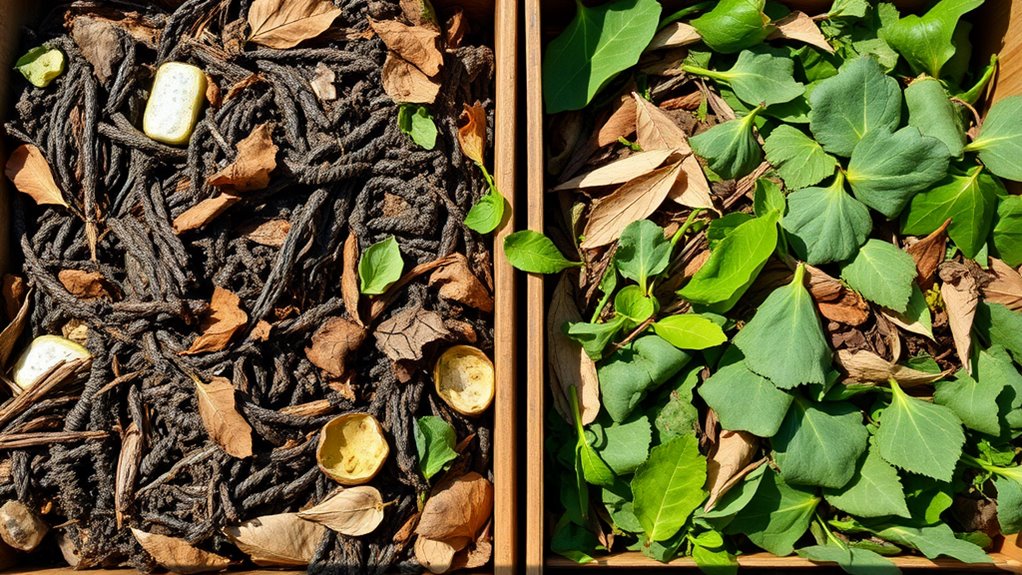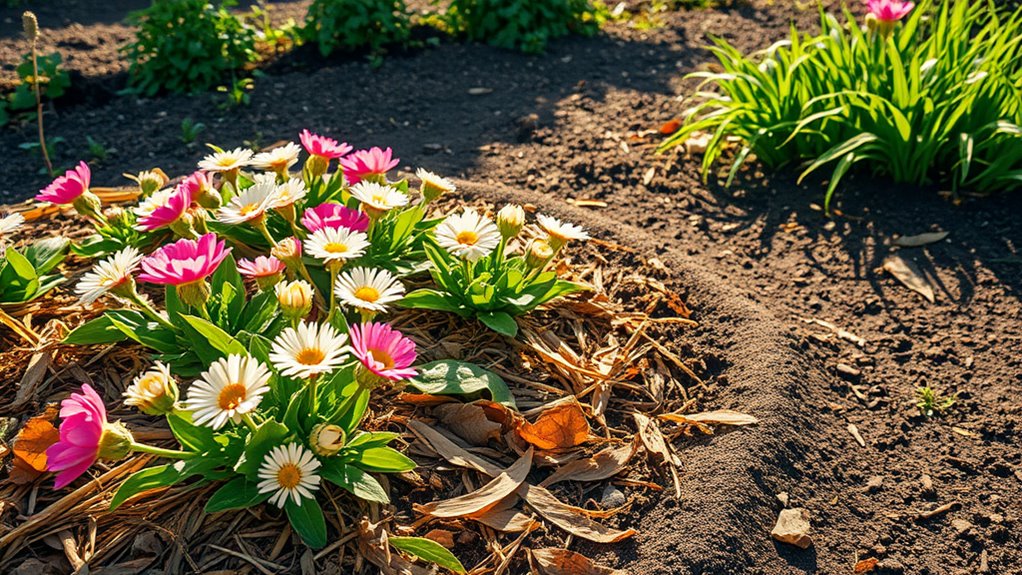Prune Like a Pro With This Super Simple Method
You’ll master pruning like a pro with this simple method by starting with sharp tools like bypass pruners and loppers for precise cuts. Choose healthy plants and time your pruning for late winter dormancy to minimize stress. Use techniques such as 45-degree angle cuts just above buds to promote new growth and shape your plants beautifully. Steer clear of mistakes like over-pruning, and follow up with proper aftercare for thriving results. Explore these tips further to elevate your gardening game.
Key Takeaways
- Use sharp, clean tools like pruners and loppers for precise cuts on branches.
- Prune during dormancy in late winter to minimize plant stress and promote growth.
- Make cuts at a 45-degree angle above buds to encourage healthy new growth.
- Avoid over-pruning by removing only dead or crossing branches to maintain plant strength.
- Clean tools and monitor plants post-pruning to prevent disease and aid recovery.
Essential Pruning Tools
When you’re tackling pruning, essential tools ensure safe and effective results. By incorporating these tools, you can enhance plant health through proper maintenance techniques.
In this pruning guide, you need sharp bypass pruners for precise cuts on small branches, delivering clean edges without damage.
Loppers give you the leverage for medium-sized limbs, reducing strain on your hands.
A pruning saw handles thicker branches quickly and accurately.
Don’t forget cut-resistant gloves and safety glasses to protect yourself from injuries.
Regularly sharpen and clean your tools to maintain performance and prevent disease spread, making your pruning guide essentials reliable for every job.
To maximize your garden’s potential, these tools support essential pruning techniques that promote thriving plant growth.
Selecting Plants for Pruning
Before you dive into pruning, carefully select plants that will benefit most, ensuring they’re healthy and suited for the task to avoid damage and promote growth.
Start by inspecting for vibrant leaves and sturdy branches, steering clear of any showing pests, diseases, or stress.
Focus on established perennials, shrubs, and trees that respond well to trimming, like overgrown roses or fruit-bearing varieties.
Skip newly planted ones to prevent setbacks, and match your choices to the current season for optimal results.
This targeted approach maximizes health and vigor without unnecessary risks. For enhanced results, consider applying a straightforward methodology to build your pruning expertise effectively.
By adopting a specific pruning habit, you can experience a transformation leading to healthier and more abundant plants in your garden.
Basic Cutting Techniques
Once you’ve selected the right plants, you’ll need to master basic cutting techniques to make clean, precise cuts that promote healing and prevent disease. For optimal results with flowers, incorporate effortless deadheading into your routine to maintain thriving blooms with just one session per week.
Start with sharp, sterilized tools like bypass pruners for clean slices. Always cut at a 45-degree angle just above a bud or node to encourage new growth and minimize stubs.
For thicker branches, use loppers with two hands for control and leverage. Avoid tearing by supporting the branch as you cut, ensuring quick, decisive motions.
Practice on less visible areas first to build confidence and precision in your pruning.
By applying these techniques to tomato plants, you can achieve a 50% increase in yield.
Optimal Pruning Times
When you’re pruning your plants, knowing the best seasons makes a big difference in their health and growth.
You’ll adjust timing based on the plant type, like deciduous trees in winter versus evergreens in summer.
Always check for ideal weather conditions, such as dry days, to avoid damage and promote recovery.
Best Seasons for Pruning
Understanding the best seasons for pruning helps you maintain healthy plants and maximize growth.
Generally, prune during dormancy in late winter or early spring to minimize stress and allow quick healing. This timing lets you remove dead or damaged branches before new growth starts, reducing disease risks and encouraging vigor.
In summer, perform light pruning to shape plants and improve air circulation for better health.
Avoid heavy cuts in fall, as they can expose plants to cold damage and pests.
Always align with your local climate for precise, effective results, ensuring plants thrive year-round.
Timing by Plant Type
Different plants require tailored pruning schedules to promote health and vigor, so you’ll adjust your timing based on their growth habits and life cycles.
For deciduous trees, prune during dormancy in late winter to encourage new growth. Evergreens thrive with spring pruning to shape them without stressing new buds.
Flowering shrubs, like roses, need cuts right after blooming to maximize next season’s flowers. Perennials benefit from fall tidying to prevent disease.
Always observe your plant’s specific cycle—check for new growth signals—and test a small area first to ensure compatibility with your garden’s conditions.
Ideal Weather Conditions
Weather significantly influences pruning outcomes, so you should always select dry, mild days to avoid disease spread and plant stress. This ensures your plants heal quickly and thrive, minimizing risks from poor conditions.
To choose optimal times effectively:
-
Target temperatures between 40°F and 70°F to reduce shock and promote recovery.
-
Opt for low-humidity days (under 60%) to prevent fungal infections and moisture damage.
-
Avoid windy conditions, as they hinder precision and expose cuts to contaminants.
-
Schedule pruning during dry spells in the off-season, steering clear of rain or frost for safer results.
Shaping Your Plants
While pruning often focuses on plant health, shaping your plants lets you mold their growth for aesthetic appeal and structure.
First, visualize your desired form, like a tidy hedge or artistic topiary. Use sharp, clean shears for precise cuts that guide branches into place. Pinch tips to encourage bushiness, and selectively trim to create symmetry.
Cut at a 45-degree angle for neat healing and balanced growth. Step back regularly to assess your progress, ensuring the shape enhances your garden’s design without excess removal.
This simple approach transforms your space effortlessly. Additionally, incorporating deadheading techniques can enhance blooming while maintaining your plant’s shape.
To maintain the health of your shaped plants, always consider pruning timing to avoid common misconceptions that could harm growth.
Enhancing Plant Vitality
When you prune your plants correctly, you’ll boost their growth by directing energy to the healthiest parts.
This method also enhances root health, as it reduces stress and encourages stronger root development.
Now, apply these techniques to see immediate improvements in your plant’s overall vitality.
Additionally, by debunking gardening myths, you can refine your pruning practices for even better outcomes.
Furthermore, by addressing common soil myths, you can ensure optimal soil conditions to support your plants’ health and growth.
Boost Plant Growth
Pruning plays a key role in boosting your plant’s growth, as it redirects energy to healthier parts and promotes new shoots. By removing dead or overcrowded branches, you’re encouraging vigorous development and a fuller shape.
To do this effectively, follow these steps:
-
Identify targets: Spot weak or crossing branches that hinder growth, then prune them precisely.
-
Use sharp tools: Make clean cuts at a 45-degree angle to minimize damage and speed healing.
-
Time it right: Prune during the plant’s active growth phase for optimal results.
-
Monitor progress: Check regularly to ensure new growth emerges, adjusting your approach as needed.
This method keeps your plants thriving and robust.
Enhance Root Health
Enhancing your plant’s root health boosts overall vitality and supports robust growth. When you prune correctly, you’re promoting better nutrient uptake and reducing stress, allowing roots to expand and absorb more efficiently. This prevents issues like root rot and enhances resilience. To guide you, here’s a practical table of techniques:
| Technique | Benefit |
|---|---|
| Aerate soil | Improves oxygen flow |
| Mulch base | Retains moisture |
| Avoid over-pruning | Minimizes shock |
| Use sharp tools | Prevents damage |
| Monitor watering | Optimizes hydration |
Mistakes to Steer Clear Of
While mastering pruning techniques, you’ll want to steer clear of common mistakes that can damage plants and undermine your efforts. These errors often stem from oversight, so focus on precision to succeed.
-
Prune at the wrong time: You’ll stress plants by cutting during active growth, leading to poor recovery.
-
Over-prune excessively: Removing too much foliage weakens the plant and invites disease.
-
Make improper cuts: Sloppy angles or stubs hinder healing and increase infection risks.
-
Use dull tools: Blunt blades crush stems, making wounds vulnerable to pests.
Pruning Various Plant Types
Different plants demand tailored pruning approaches, so you’ll adapt your techniques based on their growth habits and needs.
For deciduous trees, prune during dormancy to shape and remove dead wood, enhancing structure.
Evergreen shrubs thrive with light, year-round trimming to maintain density.
Flowering perennials need cuts right after blooming to boost next season’s flowers.
Vines require frequent pinching to control growth and direct energy.
Always match your cuts to the plant’s vigor—light for slow-growers, bolder for vigorous ones—to promote health and aesthetics without over-stressing them.
Immediate After-Pruning Steps
After you’ve pruned your plants, clean your tools immediately to prevent disease transmission and avoid spreading pathogens. This ensures your garden stays healthy.
Here’s how to handle the next steps effectively:
-
Dispose of cuttings: Bag and remove plant debris from the area to prevent pest attraction and disease spread.
-
Inspect for damage: Check plants for any unintended wounds or stress, addressing issues right away.
-
Water appropriately: Give plants a light watering if soil is dry, aiding recovery without over-saturating.
-
Monitor closely: Keep an eye on plants for the first few days to catch early signs of problems.
Pro Tips for Better Results
To get the most from your pruning, you’ll want to adopt these pro tips that sharpen your technique and boost plant health.
Always use sharp, sterilized tools to make clean cuts and prevent infections—wipe them with alcohol before each use.
Prune during the plant’s dormant season to minimize stress and encourage vigorous growth.
Cut at a 45-degree angle just above a bud to promote healing and direct new shoots.
Monitor your plants afterward; if issues arise, adjust your approach next time.
These steps ensure thriving, resilient plants with minimal effort.
For even more vibrant blooms, try deadheading techniques to remove spent flowers and encourage new growth.
To enhance your garden’s overall appeal, consider combining these pruning techniques with flower bed care practices for sustained vibrant blooms.





